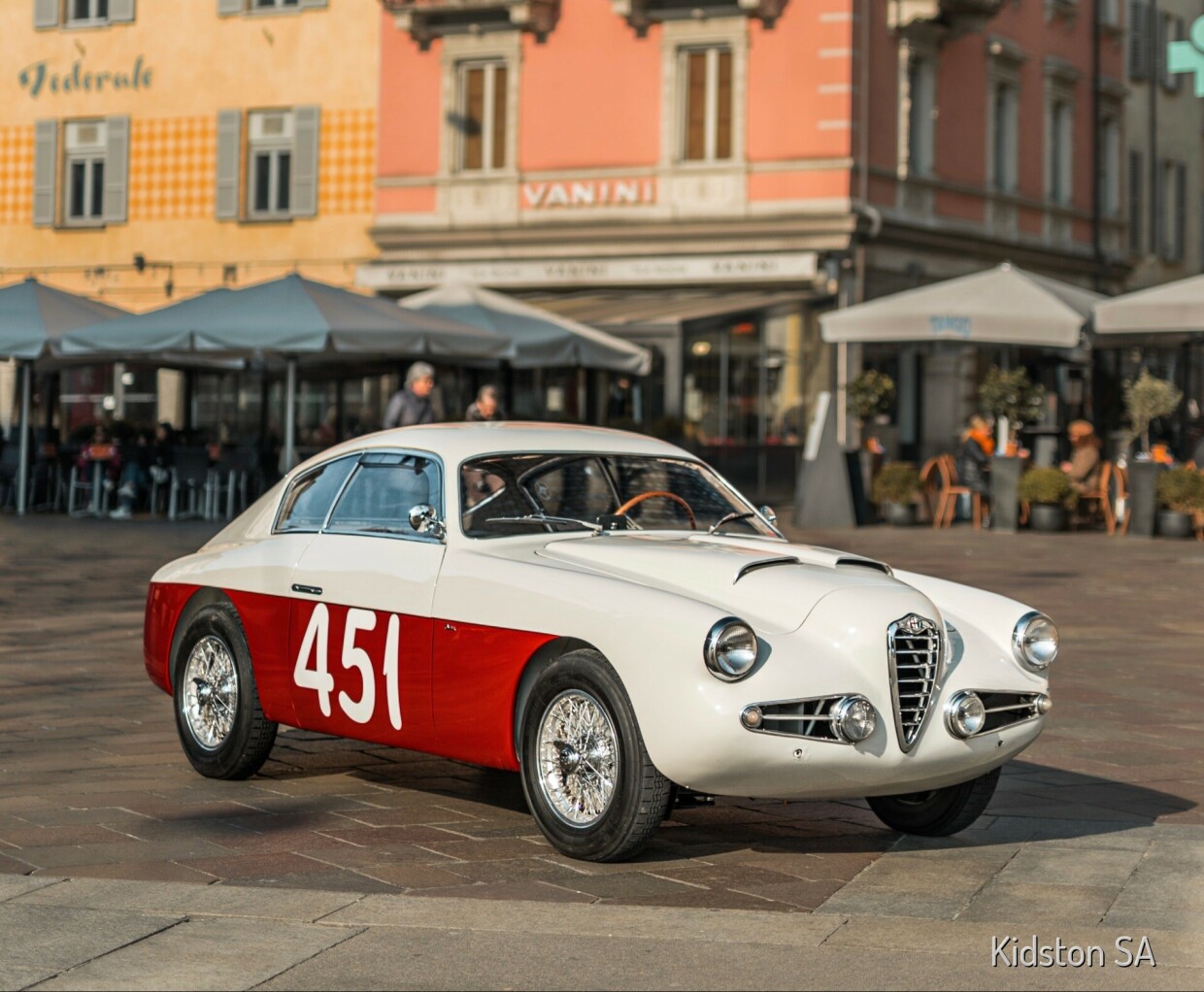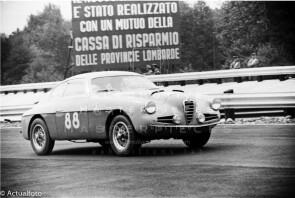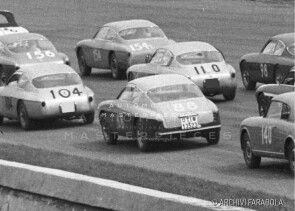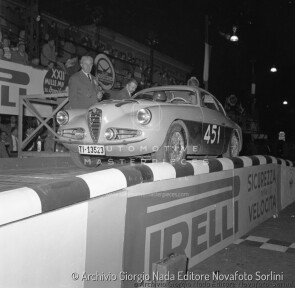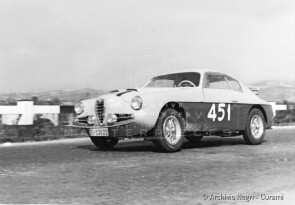
1955 Alfa Romeo 1900 C Super Sprint
ON/OFF
Why am I an Automotive Masterpiece?
L. Limited edition cars
no. 39 manufactured. no. 39 manufactured
In 1950, Alfa Romeo thought it was time to replace the glorious but now old pre-war 6C2500 and to make a car keeping up with new technologies that now were proposing the body integrated into the chassis: a car, so to speak, modern. The car, entirely designed under the supervision of Orazio Satta Puliga, born and developed entirely at the Portello plant, would have contained, like Alfa Romeo tradition, several mechanical refinements. The Alfa Romeo 1900 was built between 1950 and 1959 and was the first entirely new post-war project of the company. It was the first Alfa Romeo built entirely on an assembly line, starting the high-quality mass production at the Portello. First monocoque production car and the first Alfa Romeo with left-hand drive. The heart, as in every Alfa Romeo, was the engine. With the 1900 the Milanese house abandoned the six and eight cylinders engines in favor of a fractioning that allowed a lower taxation. Instead, they were in light alloy, with two overhead camshafts and hemispherical chambers. Giuseppe Busso opted for an independent double wishbones front suspension. The rear suspension was new: the live axle with coil springs was connected to the chassis by two lower struts and a top triangle. The aluminum drum brakes were finned and the rims of the wheels equipped with slits to help cooling. The 1900 was one of the very first automobiles in the world to adopt radial tires. The configuration, the design of all the monocoque laminates and even the study of production equipment were carried out at the Portello. The first road exit took place on March 2, 1950 with Consalvo Sanesi driving. The shape was the result of a refining by Orazio Satta Puliga and Antonio Alessio. He consulted Gaetano Ponzoni, of the Touring that suggested significant finishing touches. The gear lever by the steering wheel allowed two three-seater sofas. The bakelite steering wheel had a horn ring. The dashboard had a large semi-circular speed indicator with oil pressure gauge and fuel gauge on each side. In the middle, the housing for the radio or the tachometer. The 1900 four-door sedan was the only model available until the introduction of the 1900C coupe in 1951 and the TI saloon in 1952, it was equipped with a 1.9-liter engine that delivered 90 hp and reached a top speed of 171 km/h. Production ceased in 1959 with a total of 17,243 cars produced in the various models. It was the “Alfona” for the most, the “Pantera” for excellence, “the family car that wins the races” in the slogans. She was much loved and also very feared.
Iginio Alessio, then general manager of Alfa Romeo, was concerned for the viability of the independent Italian Coachbuilding industry–the advent of the unibody chassis design was threatening to put the "carrozzerie" out of business. Alessio was also a personal friend of Gaetano Ponzoni co-owner of Carrozzeria Touring Superleggera, thus from 1951-1958 Alfa Romeo built five different variations of the 1900 unibody chassis specifically for independent coachbuilders. Alfa Romeo gave official contracts to Touring to build the sporty 1900 Sprint coupé and to Pinin Farina to build an elegant four-seat Cabriolet and Coupé. The availability of a suitable chassis led to many other coachbuilders to build versions of the 1900. Carrozzeria Zagato built a small series of coupés designed for racing. The Alfa Romeo 1900 C Super Sprint Zagato represent the maximum expression of Zagato in terms of lightweight bodyworks and aerodynamic efficiency. The fast yet heavy 1900 sedan was reworked by Zagato in order to provide the gentleman drivers of the GT category with a modern and very efficient car, designed on the short wheelbase chassis offered from Alfa Romeo. The 1900 SSZ (as unofficially known) is the sum of many different innovations, like the rounded shapes around the big Alfa Romeo 2-litres engine, the B pillars integrated in the side glasses with an extremely light aluminium frame, an aerodynamic lightweight aluminum body and, on some of the 1900 SSZ built, the famous Zagato's trademark double bubble roof “doppia gobba” which was able to lower the front section of the car and to increase the roominess and stiffness of the roof. These cars were individually hand-crafted. It is thought that just 39 examples (plus two bare chassis) of the 1900SSZ were built, from 1954 to 1957, and they are regarded as the pinnacle of 1950s production Alfa Romeos.
Chassis no. 01931 was delivered new early in 1955 to Vittorio Vanini - a successful wealthy privateer of the period, from the famous family of Swiss chocolatiers - through Sonvico, the Alfa Romeo dealer in Lugano, in the Swiss canton of Ticino. The rakish two-tone Zagato berlinetta was registered ‘TI 13523’. On 1 May 1955, in the hands of Vanini and co-driver Ivo Badaracco, 01931 participated in the Mille Miglia road-race carrying race number ‘451’. Starting, of course, at 4.51am they passed through the Rome checkpoint 6 hours, 44 minutes and 46 seconds later and crossed the finishing ramp in Brescia after 12 hours, 56 minutes and 11 seconds to claim 19th place overall: the first of Alfa Romeo 1900 SSZ and a superb second in class. In addition to their impressive Mille Miglia performance, the Swiss-Italian gentleman driving duo also contested theCoppa Intereuropa at Monza on 11 September, the same year; the GT race preceding the Grand Prix, finishing 11th overall. It has been hidden from view for most of its life and spent over 50 years in the hands of a very private, enthusiastic American owner.
